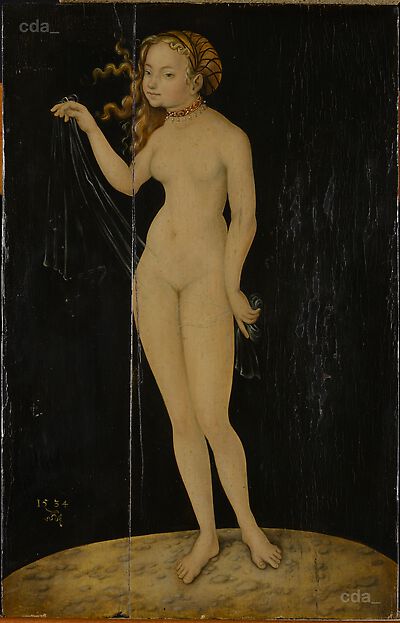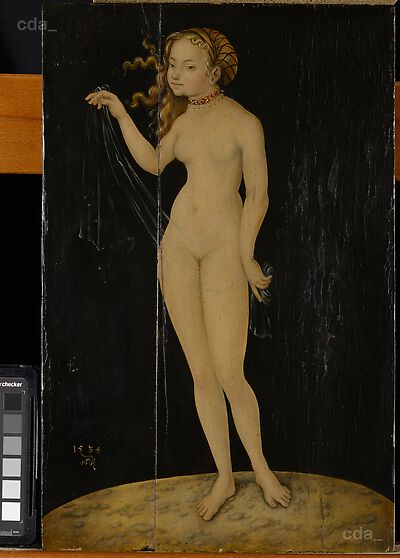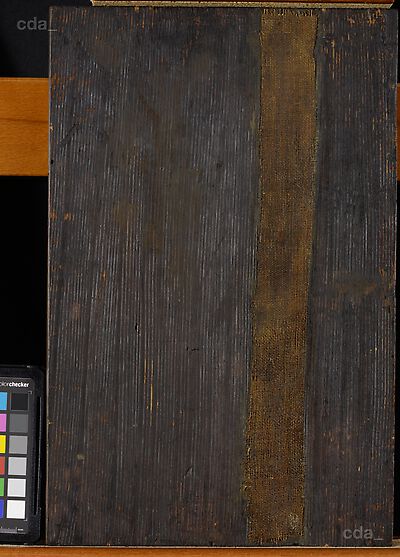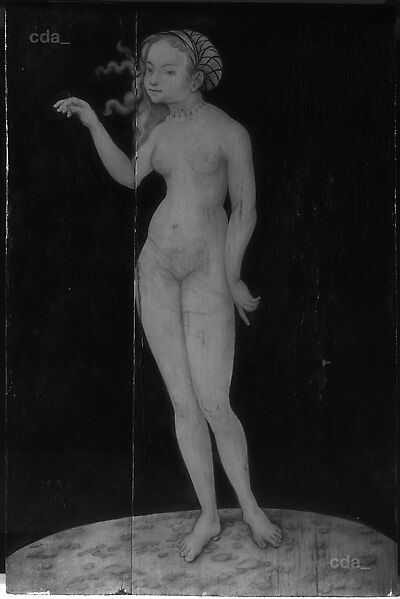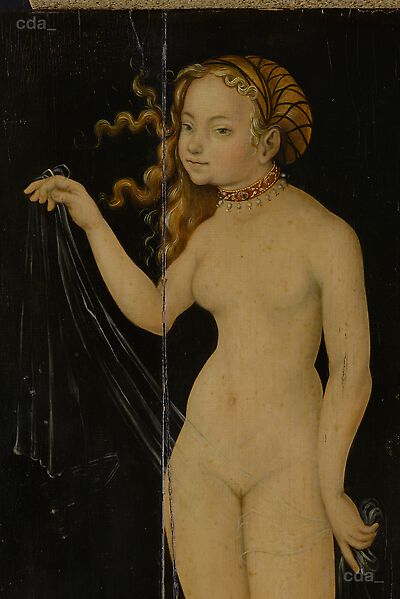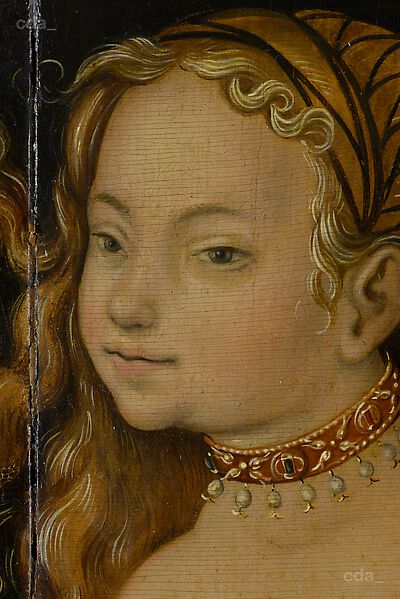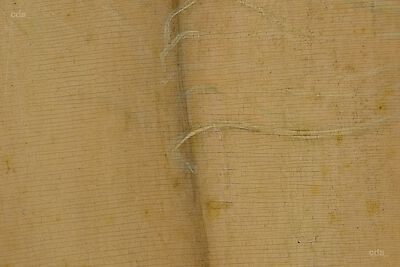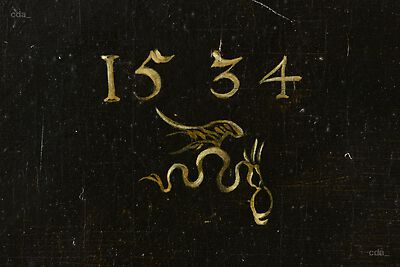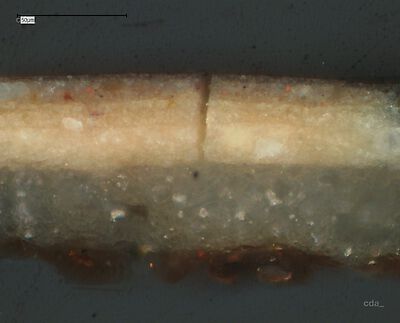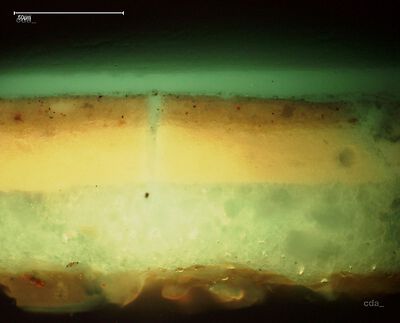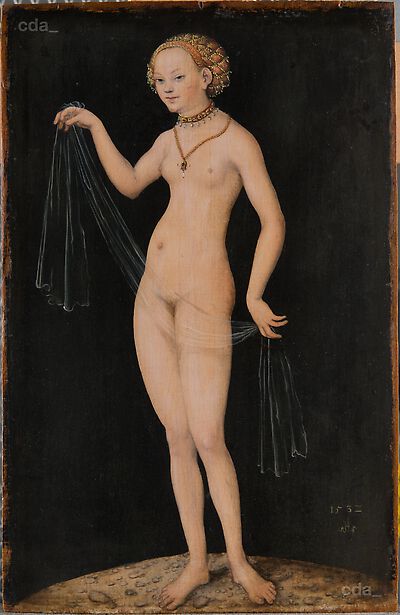Support
The wooden support (37.6 x 24.1 x 0.6 cm) consists of two planks of different widths, horizontally aligned and glued. On the reverse a strip of fabric was glued over the join to reinforce it. The reverse was smoothed with toothed plane and painted brown.
Ground and Imprimatura
The panel has a white ground. A barb is not evident. Examination of a cross-section showed that the ground was applied in numerous layers and that the composition of the layers differ. The cross-section also reveals that the craqulée only affects the paint layers and the upper ground layer.
Underdrawing
Infrared reflectography revealed in part a black underdrawing on the ground layer. The drawing instrument could not be verified, but a brush may have been used. The linear drawing records essential contours and details within forms. There are no major deviations between the underdrawing and the final painted version.
The style and character of execution do not correspond with the underdrawing found on works securely attributed to Cranach and his workshop.
Paint Layers and Gilding
The paint application is relatively thin and even. In contrast the x-radiograph has a very patchy appearance. The high quanity of blue pigment (azurite?) in the eyes of Venus is striking. The contours of the stones on the ground were in part scratched into the paint. There are numerous small yellow paint dots on the black paint in the background to the right of the centre.
An insignia was painted in the bottom left corner with yellow ochre and yellow paint (lead-tin-yellow), a serpent with dropped bird's wings and dated '1534'. However the numbers and the serpent has been repeatedly reinforced with admixtures of varying brightness and as such highlighted.
Employing XRF-spectroscopy on six measurement points the elements in the paint were detected and by comparing the optical characteristics the following pigments were identified:
lead white, lead-tin-yellow, iron oxid, vermilion, copper pigment
The presence of calcium suggests the use of calcium carbonate (chalk) or calcium sulphate in the ground or/and bulking agent.
At all six measurement points considerable quantities of zinc were detected. Examination under the microscope excluded the possibility that each of the measurement points was contaminated by later retouches.
The style and technique differ in the execution of the flesh paint from that on works securely attributed to Cranach and his workshop. In particular the distribution of lead white recorded in the x-radiograph reveals a different modelling technique. The identified pigments lead white, lead-tin-yellow, vermilion, iron oxide and copper pigment were all in common use in European panel painting and in the Cranach workshop. However the considerable amount of zinc measured is a clear indication for the presence of zinc white, which was possibly added to the lead white. The pigment zinc white was not available in the 16th century.
Both lead and tin were detected on this painting and as lead-tin-yellow was scarcely used on panel paintings after 1750 and only rediscovered aboout 1940 it may be inferred that the present painting was created after 1945.
[Unpublished Examination Report, G. Heydenreich, 2015]
